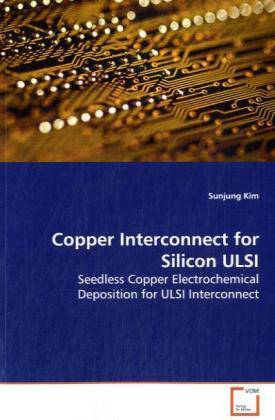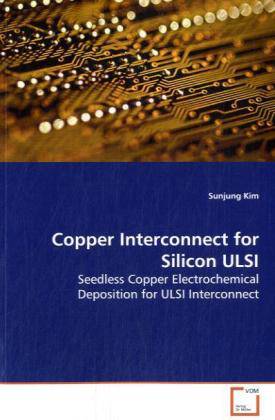
- Afhalen na 1 uur in een winkel met voorraad
- Gratis thuislevering in België vanaf € 30
- Ruim aanbod met 7 miljoen producten
- Afhalen na 1 uur in een winkel met voorraad
- Gratis thuislevering in België vanaf € 30
- Ruim aanbod met 7 miljoen producten
Zoeken
Copper Interconnect for Silicon ULSI Seedless Copper Electrochemical Deposition for ULSI - Interconnect
Seedless Copper Electrochemical Deposition for ULSI Interconnect
Sunjung Kim
Paperback | Engels
€ 58,45
+ 116 punten
Omschrijving
Electrochemical Deposition (ECD) has become the most promising technology for copper interconnect on ULSI circuits since 1997. Dual damascene technology followed by ECD has allowed for copper to replace aluminum in the ULSI interconnect. The ECD method needs a seed layer, but it becomes more difficult to conformally deposit a seed layer for copper ECD as the feature size decreases beyond 65 nm. Depositing seed layers on diffusion barrier layers, the inner volume of trenches and vias for copper filling is reduced further. Due to these difficulties, seedless copper ECD was developed in order to reach the flaw-free fill of copper for ULSI interconnect with high aspect ratios. This book deals with the seedless copper ECD directly onto diffusion barrier layers, which is desired to avoid creation of voids inside copper wires. The electrochemical system and mechanism of seedless copper ECD, the nucleation and growth models, and the adhesion study of copper/diffusion barrier interface are covered in depth. This book would be useful to students and professionals who are interested in microelectronic processing, especially in ULSI interconnect.
Specificaties
Betrokkenen
- Auteur(s):
- Uitgeverij:
Inhoud
- Aantal bladzijden:
- 144
- Taal:
- Engels
Eigenschappen
- Productcode (EAN):
- 9783639111309
- Verschijningsdatum:
- 23/12/2008
- Uitvoering:
- Paperback
- Formaat:
- Trade paperback (VS)
- Afmetingen:
- 152 mm x 229 mm
- Gewicht:
- 199 g

Alleen bij Standaard Boekhandel
+ 116 punten op je klantenkaart van Standaard Boekhandel
Beoordelingen
We publiceren alleen reviews die voldoen aan de voorwaarden voor reviews. Bekijk onze voorwaarden voor reviews.











